Epoxy resin is always attracting interest from wood enthusiasts. Your reactions to articles on this topic and the desire to learn new things are evidence of this. I always get questions from you about clear epoxy resin, the right one for wood or about staining resins. After the last question about staining epoxy resins I looked to see what stains are most commonly used for epoxy resin and was surprised to find that there are all sorts of ways to stain epoxy resin, many of them within everyone's reach. Let's see together how and with what we can colour epoxy resin.
What you need to know when you decide to colour epoxy resin
About types of epoxy resins and areas of use I said here so I won't come back. If you have a project with epoxy resin and wood you should know that not every resin you choose will fit the project. You must use resintransparent castable epoxy for wood. There is also a bubble self-removing version which will make the job much easier if the project does not include bubbles left in the film.
Transparent drying resin is best suited for staining. It should be borne in mind that the resin takes on a slight yellow tint when drying, which may influence the desired colour. Therefore the recommendation is to prepare a small amount of resin first and only after you decide that this is what you want to prepare a larger amount.
For staining, the resin and hardener are mixed first.. Mixing is done according to the instructions received at purchase or those on the product label. Each manufacturer has its own mixing recipe (some have 1:1 mixing, others 2:1) and to obtain the desired result it must be followed. Mix the components thoroughly, but avoid air entrapment.
After mixing, add the dye in the percentage of 2-6%.A lower percentage of dye may hardly colour the resin at all, and a higher percentage may influence the curing and final properties of the resin. If pigments dissolved in epoxy resins are used for tinting, they should be added up to max.5% in order not to influence the ratio of resin to hardener.
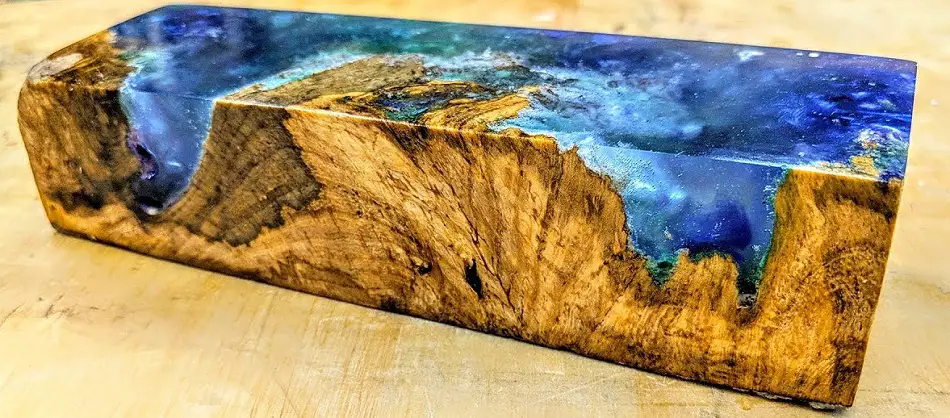
Products used for staining resin
I told you that I was surprised to see the kind of materials that can be used to colour epoxy resins. A simple classification divides these materials into traditional products and atypical products specific to other fields of activity.
Paint, ink or dyes - traditional products for colouring epoxy resins
The most used are pigments for epoxy resins. It's impossible to go wrong with them because they're made specifically for these resins. Phosphorescents also fall into the same category. The only problem may be not reaching the desired colour or intensity. Avoid this by always making a sample, a control sample. Mix small amounts to see the colour, the intensity, how it behaves in the resin. Always measure quantities to reproduce the effect on a larger scale.
Vacrylics and acrylic inks are also compatible with epoxy resin. Note that acrylic paint is more matt and takes away from the gloss of the resin. If you want a very glossy resin choose another way of colouring.
Solvent-based inks colour evenly and are a cheap and safe option. They are intense and can opaque colour resin. Unlike pigment coloured resins, ink coloured resins are translucent, transparent to light. That's why many choose these inks when their project also involves a light source.
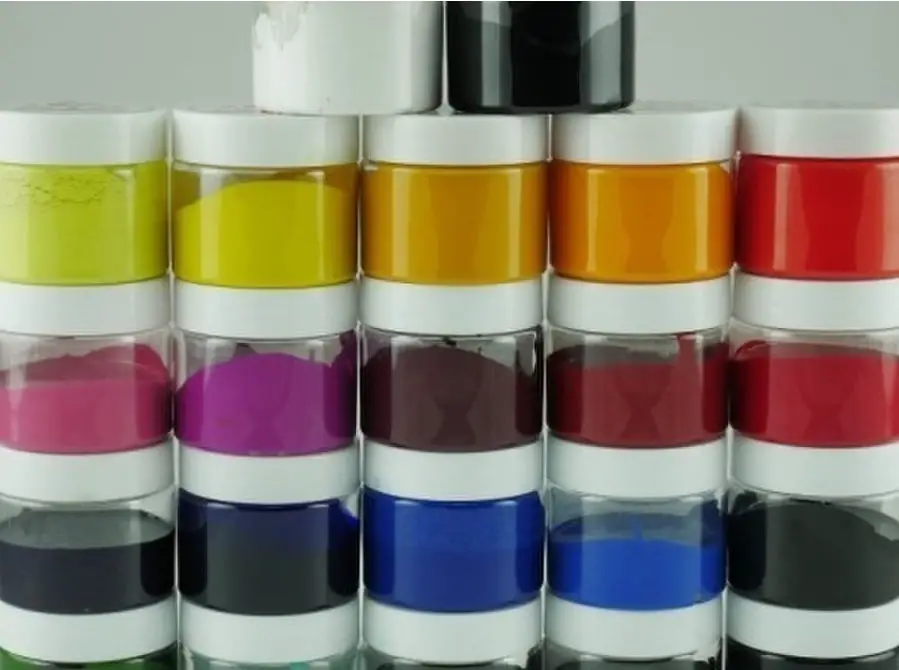
Atypical dyes: powder pigments, nail paint, writing inks, various powders
Pigment powder does not dissolve in the resin, but colours it intensely, the fine particles floating in the resin mass. It is basically a dispersion like water-based paints. Choose pigments only if you don't want a very fine and uniform surface. As the mixture can't be made very smooth spots and clumps of pigment appear on the surface. The surface appearance will be slightly grainy.
Also belonging to the powder pigment family are watercolours, those colours used by children to paint. They are pigments that form dispersions with water. They can also be used to colour epoxy resins.
It may seem strange to you, but pigments are still pigments and blushes ladies, even the ones with glitter. You can use them without any problems to colour epoxy resin.
Writing inks are dyes dissolved in water. In this case it is no longer a suspension but a solution. They cannot be used to obtain an opaque coloured resin because they have no covering power. The result will be a transparent coloured resin.
Nail paint - oja- is an acrylic paint and behaves in the same way as that which belongs to the group of traditional materials.
You can also use to color epoxy resin paprika, turmeric or very fine wood powder, all these materials behaving like powder pigments.
The only paints or stains that don't work are oil-based.Mixing with oil makes the resin behave strangely and all sorts of undesirable effects occur. I've read about someone using such a product to stain, mixing it very well to incorporate it, but that was the only information on this. Everyone else recommends forgetting about these products.
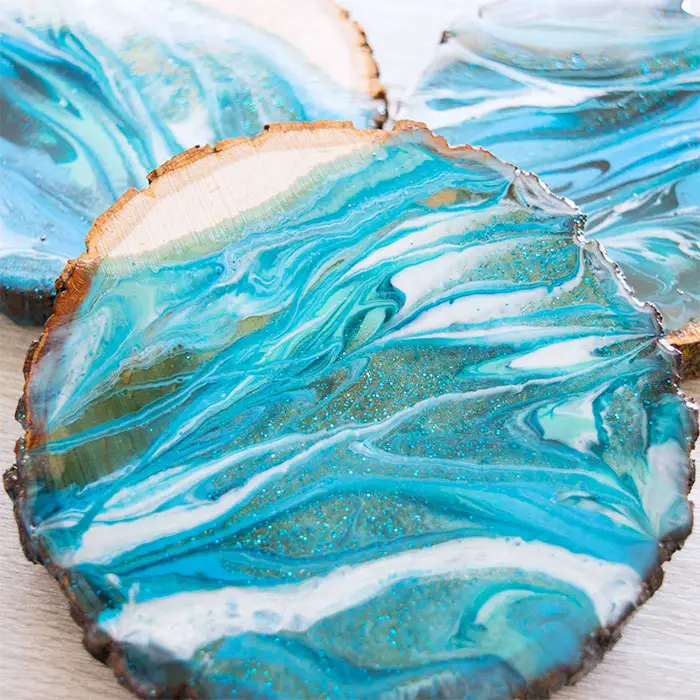
Be creative!
The phenomenon of combining epoxy resins with wood has been gaining momentum recently. Unfortunately, very few people manage to make really attractive things, many of them going into the kitsch area. I've seen furniture considered rustic only because it was slices of wood in a resin table. In my opinion rustic furniture is something else entirely.
When using resins, we went from filling cracks and knots to pieces of wood lost in a sea of resin. Here too we can find charm if the wood is salvaged and has that old look, if it has galleries and curry holes or is broken so that it looks like a sleepy forest encased in resin. Some wood left in the workshop from other work, submerged in resin, will certainly not be a work that too many people want.
And the tops with beer caps I think they need to be done a bit selectively. Such a home bar top can be very enjoyable and interesting for friends to have a glass of beer with. But making the dining room table top like this is, in my opinion, a bit much.
Be creative! Take inspiration from what you see from your colleagues, but try to come up with something new. Don't overuse glitter and phosphorescence. Resin is already an addition to wood, don't overdo it. Let the wood tell its story, even when it's a broken piece encased in clear resin. There's a whole story in those splinters and if you look closely, you'll see the forest.
Good luck!
Your comments are welcome below. Share the article if you find it useful. Thank you.
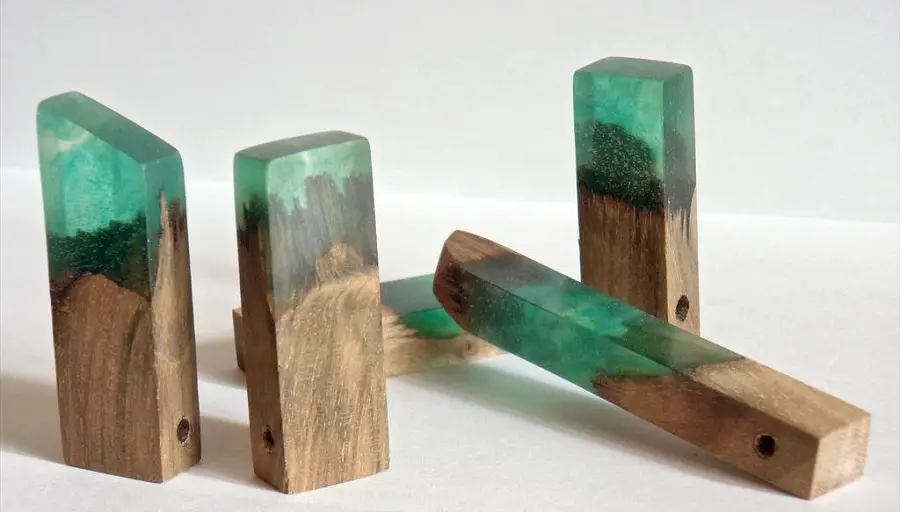
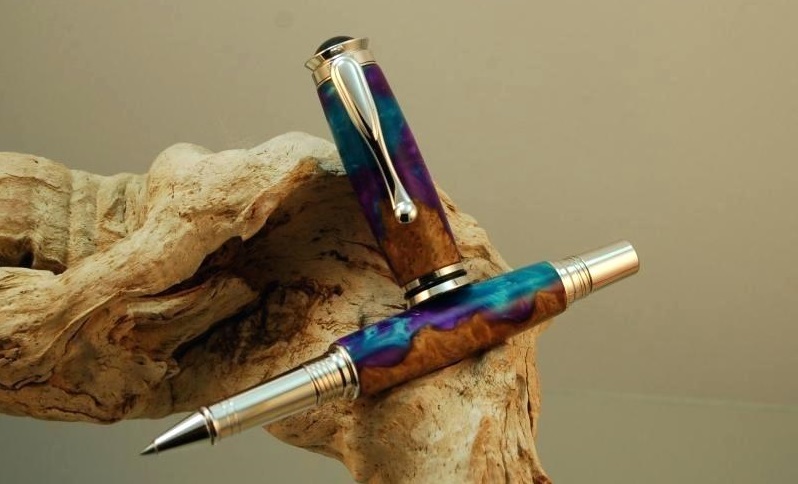
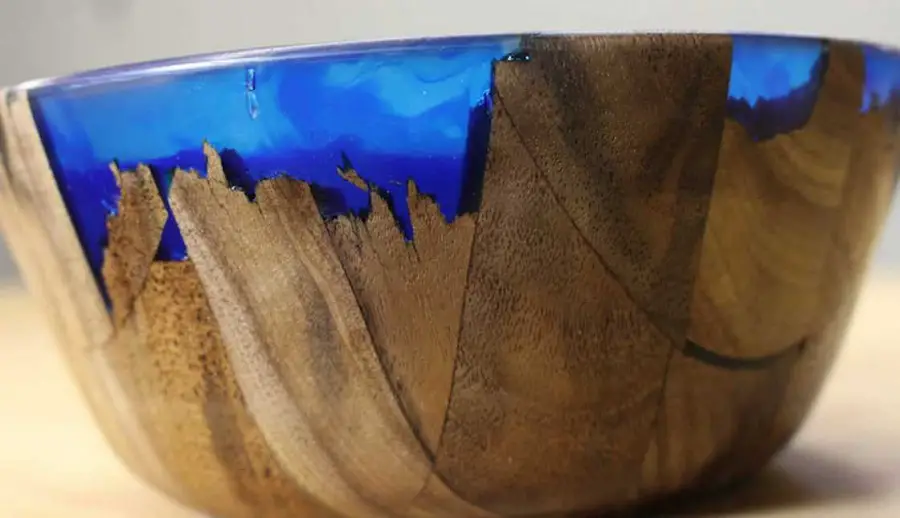


























Well said... One more bit and wood and resin countertops end up like "glass fish on TVs" (as a colleague of mine says)
I was captivated by your description and the listing of the steps of using epoxy resins.I would like to make my own personal object in this way but I did not understand what I make the sand and how.Thank you for your exposition.Silvia
Good evening!
The box that is built to pour the resin must be made of a flat and inert material so that the resin does not adhere. Melamine chipboard with a very smooth surface (no pores or other 3D designs) can be used. Plexiglass, polycarbonate or polyethylene or polypropylene foil can also be used, placed in boxes of the desired shape. After hardening and removal of the resin sandpaper, the surface can be sanded to smooth and even it out with a liquid resin cloth or coated with a thin layer of varnish.
All the best!
Don't forget to subscribe to the printed Wood Magazine! For only 58 lei/year you can find out news in the field, discover craft ideas or trade secrets. We remind you that the content in the printed magazine is different from the one on the website. Details in the link below.
Thank you!
https://revistadinlemn.ro/product/abonament-revista-din-lemn/
No offense, but where did you research for this article?
I have been working with epoxy resin day in and day out for over 3 years, and what is in this article has nothing to do with reality.
Hello!
No offense. I've always felt that you can only evaluate by accepting criticism and learning from it.
I generally research from American, Canadian, Australian and European sites (English in particular).
It would be very useful to have your experience in this field. I know what you are working on and it is indeed special. If you would like to clarify from the point of view of a person who actually works with epoxy resins, you can come with additions.
All the best!
a very cool thing that is catching on are epoxy resin geodes - a very attractive art form. Also, abstract paintings that combine different colours using techniques such as blowing, string pulling, swirling, flip and drag, and often involve the use of everyday objects to achieve different effects. Some effects require the use of oils to achieve random colour separations in the form of well-defined bubbles. Some examples
https://www.youtube.com/watch?v=tgUdcpprJPw
https://www.youtube.com/watch?v=ckzYYPkrJb8
Thanks for the addition. 🙂
All the best!
A very good article, I have tried all kinds of dyes , from glass paint, ceramic, glitter, acrylic paint and nail gel. Tomorrow I can't wait, thanks to this article to use paprika and turmenic. Thanks
A question: can the resin be coloured after it is dry? For example, a second layer of coloured resin can be applied with a brush to give different colours to different parts of the cast object.
Hello!
It can be coloured by applying, with a brush, a layer of coloured resin (+ hardener) or a coloured layer of polyurethane varnish.
All the best!
I wonder if you could give me an example of paint and where I could buy it from! I would like to make a table for my living room and the top is 4;5cm thick! Thanks for any answers!
Good evening!
In the link below, at the end, you have a link to a manufacturer of epoxy resins and another to a shop where you can find epoxy resins. These are generally transparent, for working with wood, and can be coloured with pigments that you can find at the same shops. There are also coloured epoxy resins for floors that you can find in building material shops.
All the best!
https://revistadinlemn.ro/2018/04/12/rasina-epoxidica-pardoseala-epoxidica/
That's exactly what I wanted to find out. It seems that those dyes listed, are not as expensive (in price) as epoxy resin. I had a doubt, but reading here I found out everything. Thanks, and congratulations!